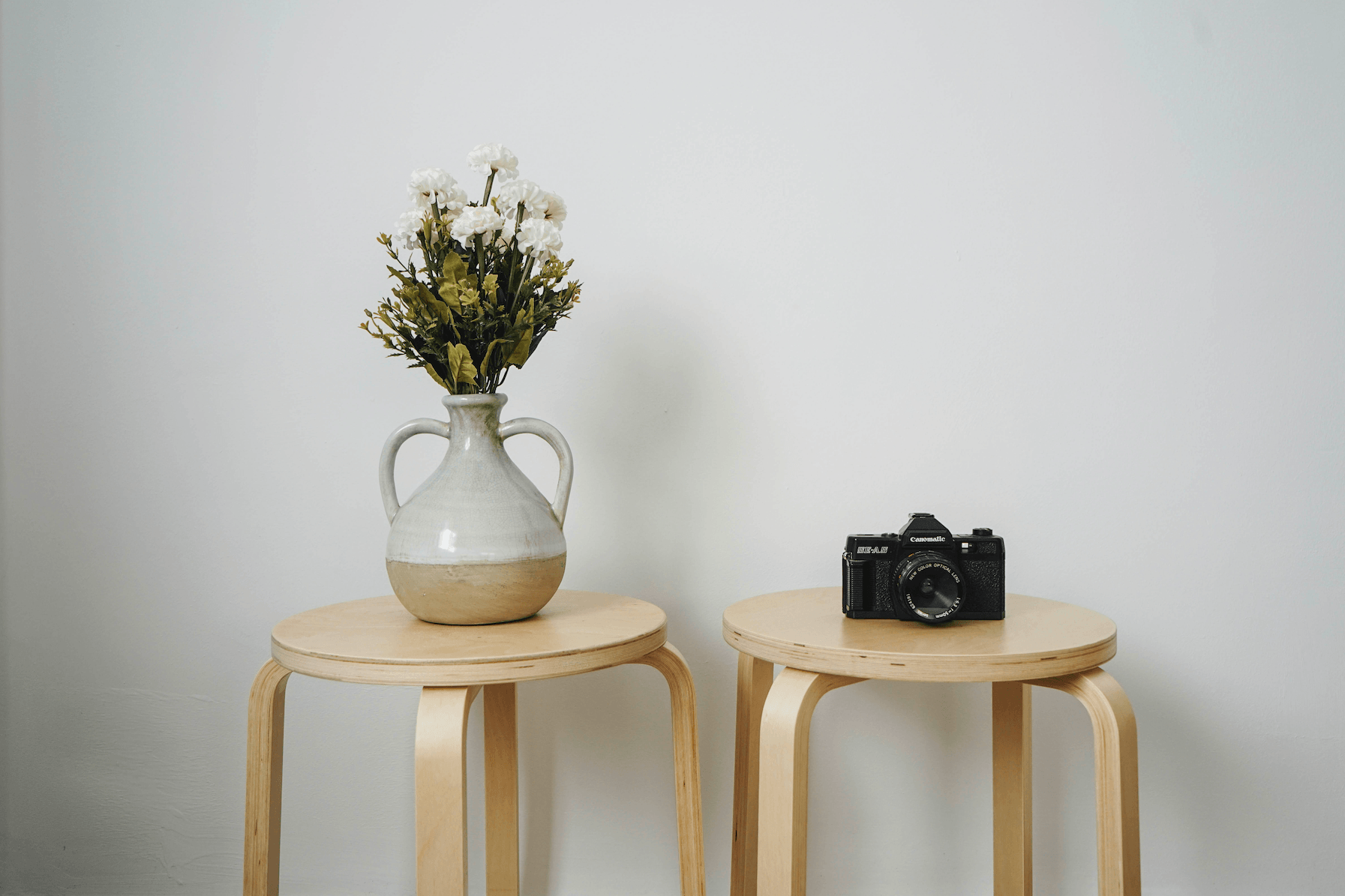Flowers are captivating and fun to capture. One of my favorite things about photographing flowers is the wide range of colors and shapes you can get from nature. And, the best part is, you will have a still subject!
Below, you will find the best tips to capture gorgeous floral photography!
10 Tips on How to Photograph Flowers:
- For best results, photograph in overcast day
- Sun isn't entirely your enemy, see details below
- Flowers won't be still all the time
- Get up close and personal
- Use a reflector
- Pay attention to your background
- Use a shallow depth of field
- Always use a tripod
- Switch up the perspective
- Focus through the flower
Pick a Day With an Overcast
Since flowers are typically found outside (unless picked and in a vase like shown in the photo), the sun can be a hindrance. Although the sun gives off great natural light, it can also give too much light and create a white out. Try shooting your flower shots during an overcast day. Having an overcast will also eliminate the risk of shadows. The best time of day to shoot flower photographs is midday.
Related article: Camera Settings for Cloudy Day
The Sun Isn't Entirely Your Enemy
Although you want a cloudy day, don't rule out clear days. If you are strategically placed, you can get some great backlight. When the sun is directly in front of you, it will result in an ethereal light from behind your flower, and you will get the most gorgeous glow. The best time of day to try this technique is when the sun is close to the horizon.
Your Subject Won't be Still all the Time
The only way your flower will start to move is if you shoot on a windy day. In this case, the wind can become a pesky hindrance and challenging to focus on. Typically, the weather is most calm during the early morning hours - try shooting during this time. If you still have a little wind, bring a prop to help block it.
Get up Close and Personal with Your Petals
The inside of a flower and the petals can give some dynamic photographs. These photos can offer mesmerizing designs and get as close as possible can highland these intricacies. Your best option is to use a macro lens. A macro lens is made specifically for small detailed photographs. If you don't have access to this lens, you can also use a telephoto lens (check the minimum focusing distance on your lens). This lens should help you get pretty close, and if not, you can use extension tubes that mount on your camera to get even closer. Another option is a close-up filter that can also attach to your lens. However, filters drastically drop your image quality.
Call in Reinforcement for Light - The Reflector
Even though you are shooting during an overcast day, you still need some light. The best way to illuminate your flowers is with a photography reflector, and a reflector will make a light bounce back onto your flower.
Pay Attention to Your Background
Your background should not take any attention off of your flower. If you are getting up close to your flower, you won't have much to worry about in the background. However, if you aren't shooting close, make sure it isn't cluttered. You want your photograph to have a nice flow of elements.
A Shallow Depth of Field Will Go a Long Way
A shallow depth of field will have your flower in focus and the background blurred. This is a great way to keep the attention all on your flower. You will need a wide aperture to get the perfect shallow depth of field. In other words, you need low f-stops like f/2.8 or f/4. Make sure you are relatively close to your flower when you do this.
Always Use a Tripod
Although your subject will be relatively still, you should still use a tripod. A tripod will eliminate any motion blur, especially when shooting in poor lighting.
Switch Up the Perspective
Always try to switch up your perspective and point of view. You don't have to take head-on photos; you can move around and snap at different angles. Try shooting the inside of the flower, zooming in from the top, from below, and even from the back.
Related article: Photography Composition Techniques
Focus Through the Flower
A commonly used technique in flower photography is called "focusing through." This technique offers a unique perspective on the flower and the foreground. Once you find the flower you want to photograph, you must readjust yourself. Make sure there is another flower between your lens and the one you want to capture. Try and get as close to the foreground flower as possible - this flower will act as a filter. You will be amazed by the end result.
The world is your oyster, so get out there and start photographing Mother Nature! These tips will help you capture flowers that will make your audience swoon!
For more photography tips, check out these other articles:
Related article: Camera Settings for Sunset
Related article: Landscape Photography Settings
Related article: How to Photograph Birds












